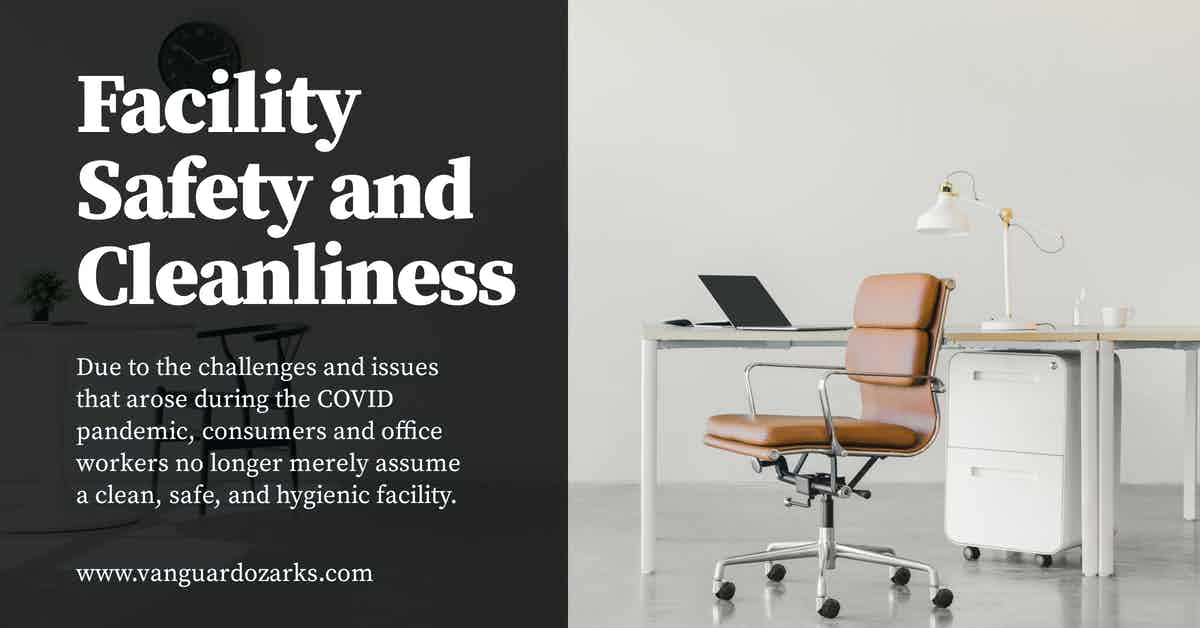Due to the challenges and issues that arose during the COVID pandemic, consumers and office workers no longer merely assume a clean, safe, and hygienic facility.

Making It or Breaking It With Facility Cleanliness and Hygiene
Before COVID, consumers and office workers took for granted that the buildings they occupied were clean and safe.
Throughout the pandemic, not only was that assumption put to the test, more often than not, it was proven false.
Now that the major part of the pandemic has subsided and facilities are faced with maintaining high levels of cleanliness and safety to address COVID variants and occupant paranoia, prospective consumers and office workers are no longer operating under the mere assumption that the building they are in is hygienic and safe.
This shift in occupant attitudes towards facility safety has created a monumental paradigm shift, consisting of:
- The demand for an incredibly high baseline level of facility cleanliness and hygiene, including significantly increased cleaning frequencies.
- Occupant control over disinfecting objects they interact with, such as electronics in the office and shopping carts in grocery stores.
- Facility-supplied personal hygiene items, and;
- Clearly visible cleaning and disinfection efforts and occupant communication regarding safety and hygiene protocols, requirements, and recommendations.
Trust as Currency in the Post-COVID Economy
A potentially hard truth--occupant trust in facility cleanliness and safety and the people or organizations responsible for maintaining those requirements have been broken.
Restoring and maintaining that trust among consumers and office workers is mandatory for the success of businesses going forward.
However, according to the 2020 Deloitte HX in Uncertainty Survey, only 4% of respondents cited any business, including their employer, as a source they trust.
The data showed that restoring that trust will require facility managers and business owners to:
- Increase basic safety precautions.
- Improve facility safety and hygiene controls, and;
- Significantly increase transparent lines of communication to occupants.
Additional survey results found that among consumers:
- 62% wanted surfaces to be cleaned after each interaction.
- 59% expect extra cleaning and infection prevention precautions to be taken.
- 57% want regular electrostatic disinfection spraying to sanitize facility furniture to occur regularly.
- 54% stated they would like to see 3rd-party certification of facility cleanliness from a trusted authority.
- 46% wanted to see proof of a facility's capacity to facilitate social distancing.
- 41% wanted regular emails outlining cleaning methods and practices.
- 60% stated that the consistent visible presence of cleaning efforts was the most important aspect of feeling safe while interacting inside a facility.
- 84% stated that personal control of cleaning ranged from somewhat to very important upon entering a facility.
- 44% preferred to be given their own cleaning supplies upon checking into a hospitality resort and forego routine housekeeping services, and;
- 82% stated they would be more likely to visit a business that was willing to take the extra steps to protect the health and safety of their employees.
Regarding office worker responses:
- 64% want equipment and shared spaces regularly cleaned by a professional cleaning service provider.
- 60% want the building furniture routinely disinfected with an electrostatic disinfection appliance.
- 51% expect daily updates regarding employee and visitor health.
- 50% want a daily update on facility cleaning efforts.
- 70% want hand sanitizer available at all entrances, and;
- 73% stated they would feel more confident in facility safety if they observed active cleaning efforts.
Source:
Takeaway
There are four key factors that facility managers and business owners that are concerned with protecting their workers and restoring the faith of the customers should take away from this data:
- Provide your office workers and customers with personal hygiene and disinfection products, and clearly publish how these products can and should be safely applied.
- Over-communicate the efforts your organization is taking to maintain the highest levels of facility cleanliness and safety, any requirements for social distancing, and any occupant health-related concerns.
- Make your cleaning efforts visible, which means daytime cleaning and day porter services, and;
- Hire a professional cleaning service provider to offset costs, provide professional experience, equipment, and training, facilitate 3rd party cleanliness certifications, and meet the demands of your customers and workforce.
Outsourcing to an experienced provider is a proven method for onboarding critical infection prevention and control services as part of a greater facility cleaning subscription service at a fraction of the cost of maintaining a similar service in-house.
Contact us today and discover why Vanguard Cleaning Systems® is the Standard of Clean® for businesses throughout Northwest Arkansas, Missouri, and Oklahoma.
In Oklahoma, dial 918-960-4450
In Arkansas, dial 479-717-2410
In Missouri, dial 417-812-9777

